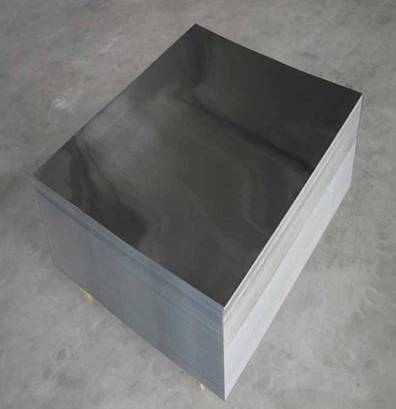PASSIVATION
In the tinplate manufacturing process, after tinning, it is subjected to a passivation treatment by which chromium is deposited on each surface to improve the oxidation resistance and its suitability for the subsequent varnishing and printing.
There are two tinplate passivation processes that are commonly used:
– Passivation 311 , which is the most widely used, and which consists of a cathodic treatment process in a sodium dichromate solution.
– Passivation 300 , which is a simple chemical treatment by immersion in a sodium dichromate solution.
Unless otherwise specified, passivation 311 is normally provided.
The following table shows the usual chromium values contributed by the passivation to the tinplate surface.
Tolerances for chrome, by surface
Minimum Maximum Code
(mg / m2) (mg / m2)
311 4.0 9.0
300 1.0 3.0
CHROME PLATED
An alternative coating to tinplate is to apply on the base steel a coating of metallic chromium and chromium oxide deposited electrolytically. This is known as Chromium Oxide / Chromium Oxide Coated Steel (ECCS) or also TFS (Tin Free Steel). It is not suitable for welding with tin or electric, although the latter can be applied if the areas to be welded are cleaned. The ECCS must be varnished on both sides.
The applied amounts of chromium / chromium oxide in the coating are expressed in milligrams per square meter and the following table is indicated.
Limit values for chromium / chromium coating in oxide
Coating mass in mg / m2 in each surface
Min MAX
Total Chrome 50 140
Chromium in oxide 7 35
These values represent the average of three readings, taken at the edge / center / edge transversely to the winding width of the band.
The coating layer must be continuous and free of pores.
OIL
After the passivation, the coated products are applied, equally on both surfaces, a uniform layer of oil, which is approved by national and international authorities as suitable for containers in contact with food. The oils used are dioctyl sebacate (DOS) for tin and DOS or butyl stearate oil (BSO) for ECCS.
The precise determination of values to be applied on each surface is difficult to define. However, it is more important to ensure that the oil is applied uniformly along the surface, in sufficient quantities to facilitate handling, and that they do not harm future lacquering and printing operations, and that they do not cause dehumidification or excessive dust collection.















0 Comments